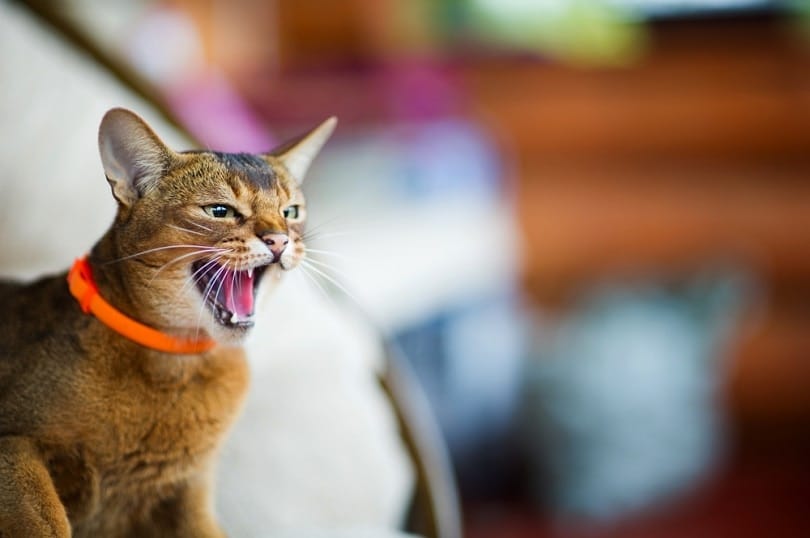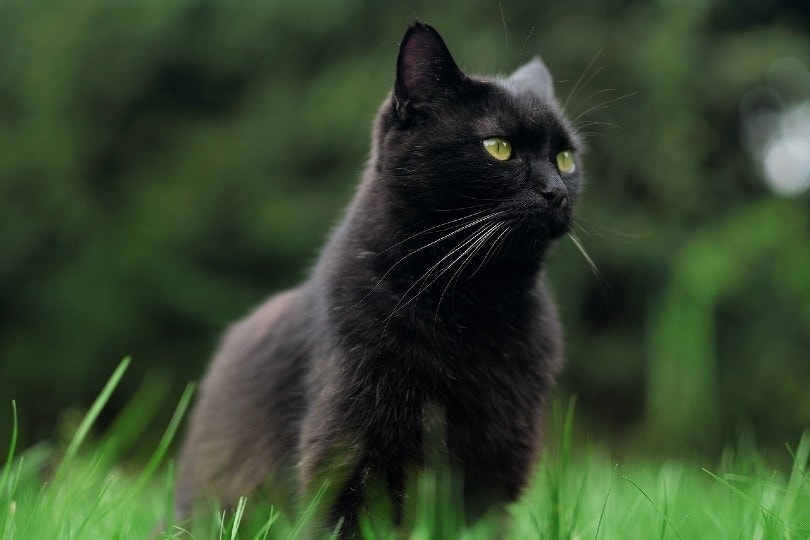Cats are fascinating animals, not only due to their silly antics but in addition how close they’re to their wild counterparts. Domestication has only influenced 13 genes in our pets. Selective breeding has had a greater impact, yielding the 73 breeds accepted by The International Cat Association (TICA). They are available in a broad spectrum of colours, patterns, and sizes, from the relatively enormous Maine Coon to the regal Persian.
Among the many apparent differences are the variations in the colour of the animals’ noses, ears, and lips. Have you ever ever noticed that your cat has pure black lips and wondered why? Again, selective breeding is at work, with official standards for every one. Nevertheless, cats with black lips can trace their origin back 130,000 years to a wild common ancestor with the African Wild Cat (Felis silvestris lybica). Therein lies the fascinating answer to this query. Include me as I explain more!
What Is Melanism in Animals?
Melanism describes the condition of a high concentration of the pigment melanin that accounts for the dark coloration of scales, fur, and hair within the animal kingdom. It also applies to a cat’s lips. Melanism isn’t at all times an all-or-nothing thing. Think in regards to the color variations you see in lots of species, akin to coyotes, chinchillas, and cats. Scientists consult with this trait as polymorphism for melanism or multiple variations.
The profit is clearly demonstrated by the evolution of the so-called peppered moth. Environmental pressures brought on by the Industrial Revolution led to a novel adaptation in these insects that allowed them to survive. The explanation was camouflage. The change in coloration made it more difficult for predators to seek out their prey. That also explains polymorphism for melanism in cats.
 Image credit: Slava Dumchev, Shutterstock
Image credit: Slava Dumchev, Shutterstock
Melanism in Felines
Cats are obligate carnivores and must hunt for food to survive. Many felines stalk their prey and depend on stealth. Most are either energetic during dusk and dawn or crepuscular or come out at night and are nocturnal. Camouflage turns out to be useful for these lifestyles. It also explains the range of melanism, from the spotted leopard to the tabby coloration of the African Wild Cat.
The takeaway message from the peppered moth case is that white makes you visible to your cohorts and prey. A cat with light-colored mucous membranes will similarly stand out once they open their mouth to yawn. It doesn’t take much to place a prey species on high alert. It’s price noting that felines aren’t at all times successful hunters, with many only prevailing 60% of the time or less. Black lips could be advantageous.
We must also put melanism in context with feline communication. Felines rely heavily on smell for an excellent reason. Your kitty has 200 million olfactory receptors to your 5 million. That ability allows them to detect prey from over 650 feet away. Nevertheless, remember the everyday cat’s activity period. They’re hunting during low-light conditions. And felines don’t see distance well in comparison with our vision.
Why Aren’t All Cats Black?
Which means a dilemma exists of being an all-black feline. Visual communication is important, especially between conspecifics and offspring. Many species have white or light-colored fur on the backs of their ears to make it easy to be seen when it’s essential, akin to bringing food to their kittens. It’s also a distinguishing feature of the African Wild Cat.
The location of the sunshine coloration is critical. It allows the animal to speak visually with cohorts while stopping prey or other predators from detecting their presence. It also explains polymorphism in melanism with its various degrees.
Interestingly, research has shown being an all-black feline is a limiting factor to evolutionary success since it interferes with needed visual communication. That’s true for wild felines, nevertheless it’s a distinct story with domestic cats. The identical study suggested a decrease in the conventional appearance of our pets because the identical environmental pressure doesn’t exist.
That’s why you’ll see entirely black cats, including their lips and ears. The likelihood is your pet follows your household’s activity pattern and is diurnal as a substitute of crepuscular or nocturnal. Nevertheless, there’s one other wrinkle to our tale that we must discuss.
 Image Credit: xiclography, Pixabay
Image Credit: xiclography, Pixabay
Abnormal Pigmentation
Some cats which have light-colored lips and mucous membranes may develop black spots on these areas, typically occurring under 1 yr old. Veterinarians normally see it in orange male felines, referring to this condition as lentigo. This coloration can be much like the African Wild Cat, supporting a genetic link to its development. The spots usually are not cancerous nor a cause for concern.
Final Thoughts
Black lips in cats are likely a holdover from the distant past when wild felines hunted the grasslands and steppes of their place of birth. They could have given them a competitive edge to enhance their success and survival. In spite of everything, it’s demanding making a living, even when you are an apex predator. Evolution is nature’s selective breeding, with the final word goal of passing your genes onto the subsequent generation.
Featured Image Credit: Kaan Yetkin Toprak, Shutterstock

